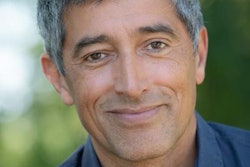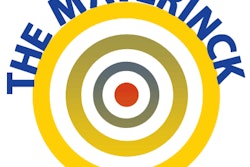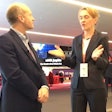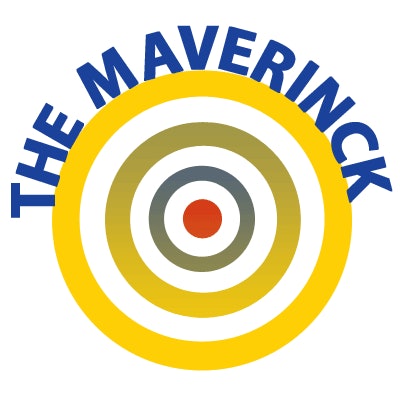
Medical research and clinical practice are largely based on anecdotes, opinions of "authorities," "experts," "opinion makers" -- and biased investigations. Despite that, diagnostic imaging has experienced the introduction of many "revolutionary" technologies that have dramatically changed imaging practice over the past 40 years.
Yet, the diffusion of these novel technologies and their utilization have been guided by many methodologically inadequate and deficient reports that tended to exaggerate their performance, creating new "clinical" needs without proving that these needs really exist. Developers and initial evaluators systematically exaggerate the performance of novel technologies and -- unconsciously -- are carried away to interpreting results in ways that confirm their preconceived views.
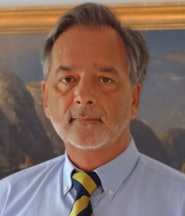 Dr. Peter Rinck, PhD, is a professor of radiology and magnetic resonance. He is the president of the Council of the Round Table Foundation (TRTF) and the chairman of the board of the Pro Academia Prize.
Dr. Peter Rinck, PhD, is a professor of radiology and magnetic resonance. He is the president of the Council of the Round Table Foundation (TRTF) and the chairman of the board of the Pro Academia Prize.A great number of diagnostic imaging methods and technologies silently disappeared again: Here today, gone tomorrow.
A main cause of the trouble is the scientific innocence of many people involved in medical imaging (and medicine at large) as they read literature and listen to meeting presentations -- as well as the deficiency of research scientists, among them medical physicists and engineers, lacking sufficient knowledge of bread-and-butter medicine.
More so, not many people in the exact sciences and medicine at universities encourage or practice critical thinking skills, because it produces neither research grants and third-party support nor career benefits. It's easier to follow the pack and to have and keep your job and academic position.
Thus, it is easily understandable that mere users of imaging technologies -- radiologists, radiographers, cardiologists, et al -- hardly ever go to the trouble of trying to deeply understand the complicated physical, chemical, physiological, and technical aspects of the machines and methodologies they are using.
Thoughts of Ivan Moseley
Some 30 years ago, a well-known U.K. radiologist, Dr. Ivan Moseley, wrote in a book review:
"How much does the practicing neuroscientist need to know of the technical aspects of magnetic resonance imaging and spectroscopy? One can argue either way: The basic theory is relatively simple, and the phenomena it describes determine the appearances of the images, so it behooves the clinician to be familiar with them; or, beyond the simplest level, the people would be well advised to leave technical details to their specialist colleagues.
"I incline to the latter view, not through arrogance, but because I regard these complex details as entirely analogous to the electronics of spectral analysis of the EEG, the methodology of S100 staining of the identification of CSF proteins: merely technical ..."1
Neuroscience is the scientific study of the nervous system; a neuroradiologist isn't a neuroscientist, and here Moseley erred. However, as far as his statement is concerned, he was not alone. A large number of radiologists shy away from having to learn the detailed basics of new techniques -- in particular such complex and challenging techniques as MRI. Still, many of them want to be scientists, performing scientific research. The system demands it, and, in most cases, only the quantity of publications counts. However, it doesn't create good radiologists -- or any kind of physicians or scientists.
Fiasco of functional MRI
Moseley's "practicing neuroscientists" have mushroomed over the years, as the fiasco of functional MRI (fMRI) shows. Thousands of fMRI researchers fell prey to wishful thinking and published tens of thousands of papers whose validity is, at best, questionable. They performed applied research but not scientific research, and they failed. It was research in the hands of amateurs playing with MRI and fMRI, lacking the background in physics, chemistry, biology, and physiology -- and the scientific rigor necessary to work in a new field. They saw pictures with colorful enhancement of the brain and overnight became cognitive social neuroscientists. I have described the background in the latest edition of our magnetic resonance textbook.2
Hand-in-glove with these developments, there is an increasing commercialization and a general change of mentality. Self-realization and self-affirmation today lies in the writing of congress abstracts and pseudoscientific articles, websites, and books. Although often vehemently denied, quantity is considered a merit, while quality comes in second and is often not even checked.
A typical example is the explosion of contributions to conferences; every year the number of submissions increases, with more oral presentations and more posters. New categories are invented to attract more submissions -- for example, "My Thesis in 3 Minutes -- MyT3" (this is no joke). No attendee of the megaconferences can take in this excessive offer. It's no presentation of genuine or serious research, science, or medical progress -- it's show business.
Immelt's words of wisdom
At the 2015 RSNA annual meeting, Jeffrey R. Immelt, the then chairman of the board and CEO of General Electric, made a bright and lucid remark when delivering the New Horizons Lecture:
"We need to concentrate our efforts to deliver the type of innovation that will truly improve the health of millions of people around the world. ... Innovation must deliver more than a new device; it must deliver real outcomes for our patients. In a time where high-tech is in high demand, it will be seemingly simple ideas such as a low-cost infant warmer that will become the true innovations of our time."3
Does this, basically, mean that the entire spectrum of gimmicks and apps companies exhibit and try to sell will be dropped and only proven useful products will be sold? I doubt it.
Copy and paste not only of text but also of other researchers' ideas has become easy; more people have quick access to all kind of information whose background, nature, and reliability they do not understand and cannot measure. The academic mindset has turned into fast McDonalds-style science, an illusion that cherry-picked data are already scientific results and data that challenge own data can be dismissed without further ado. Hard evidence and clear and proven results are ousted by assertions lacking scientific foundations. The ivory tower of yore has been replaced by blathering smartphone science and research bubbles, and inconsistent narratives are the "scientific" talk of the town.
The awe of, and respect for, outstanding scientists has disappeared and been supplanted by unreason and undigested misinformation.
I only describe what I see; I cannot offer a solution -- which, in any case, would be rather unpopular. It has to be a political one to be made by politicians, outside medicine and the sciences. It would include changes in the structures and hacking orders of society, recognition of being excellent in the art of healing and caring -- i.e., in the humane parts of medicine -- and less kowtowing to titles, pompous notion, and pseudoexcellence.
However, as Santiago Ramón y Cajal, the Spanish neuroscientist who received the Nobel Prize in Physiology or Medicine in 1906, pointed out:
"This lack of appreciation [of sincere medical research] is definitely shared by the average citizen, often including lawyers, writers, industrialists, and unfortunately even distinguished statesmen, whose initiatives can have serious consequences for the cultural development of their nation."4
We live it today.
Dr. Peter Rinck, PhD, is a professor of radiology and magnetic resonance and has a doctorate in medical history. He is the president of the Council of the Round Table Foundation (TRTF) and the chairman of the board of the Pro Academia Prize.
References
- Moseley I. Book reviews. Brain. 1991;114(2):1108-1109.
- Rinck PA. Bold, bolder, boldest. In: Rinck PA. Magnetic Resonance in Medicine. A Critical introduction. 12th ed. Norderstedt, Germany: BoD; 2018:221-225.
- Paul LaTour. RSNA annual meeting preview: Jeffrey R. Immelt. Redefining innovation. New Horizons Lecture. 30 November 2015. http://www.rsna.org/News.aspx?id=17631.
- Ramón y Cajal S. Reglas y consejos sobre inverstigación cientifica: Los tónicos de la voluntad. Madrid 1897. https://cvc.cervantes.es/ciencia/cajal/cajal_reglas/default.htm.
The comments and observations expressed herein do not necessarily reflect the opinions of AuntMinnieEurope.com, nor should they be construed as an endorsement or admonishment of any particular vendor, analyst, industry consultant, or consulting group.




